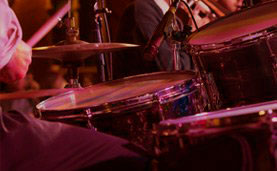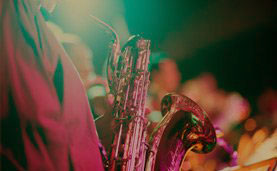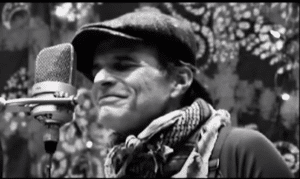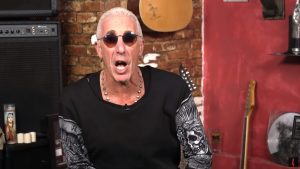The 10 The Who Songs That Conquered The 1970s
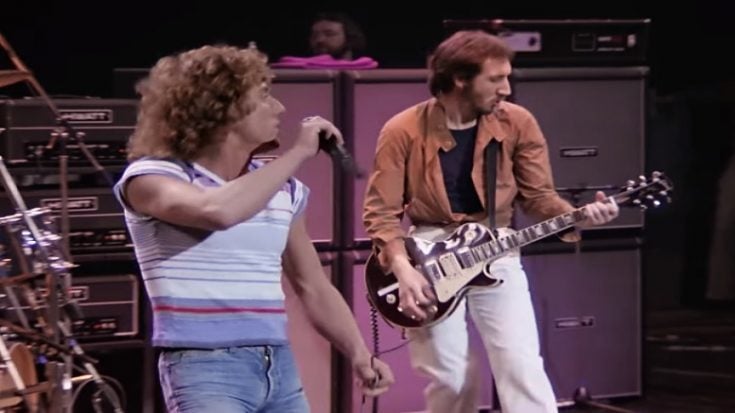
Won’t Get Fooled Again - The Who / YouTube
Choosing only ten songs from The Who’s 1970s catalog feels a bit like trying to fit a thunderstorm into a bottle. The band was firing on all cylinders during the decade, delivering albums packed with ambition, anthems, and raw emotion. With so many tracks demanding a spot, narrowing the list wasn’t just a challenge—it was a battle.
The 1970s were a defining period for The Who, a time when their sound matured without losing the explosive energy that made them legends in the first place. Albums like Who’s Next, Quadrophenia, and Who Are You didn’t just keep the momentum going—they raised the stakes. Balancing fan favorites with a few overlooked gems, we took a closer look at a decade that saw The Who evolve, expand, and still punch harder than most.
In the end, this list tries to capture the spirit of The Who’s 1970s run: bold, brilliant, and, at times, beautifully chaotic. Some choices might feel obvious, others might spark debate, but that’s part of the fun. Here’s a look back at ten songs that helped define both a band and a decade.
View this post on Instagram
10. “Who Are You” (Who Are You, 1978)
There’s something both defiant and exhausted about “Who Are You,” a track that captures the tension of a band wrestling with its own legacy. Pete Townshend, fresh from a night of heavy drinking with members of the Sex Pistols, turned that disillusionment into one of the group’s most iconic songs. The frustration of an older generation facing its supposed obsolescence pulses through every line.
Driven by a choppy synth rhythm and Keith Moon’s explosive yet unpredictable drumming, the song perfectly captures a sense of disoriented bravado. Townshend’s riffs shuffle with a mix of hesitance and determination, while Roger Daltrey’s vocals push through with a steady, almost desperate energy. It’s a sound of a band refusing to go quietly, even if the edges are starting to fray.
“Who Are You” would end up being the final great collective statement from the original lineup. Tragically, Keith Moon passed away less than a month after the album’s release. Listening now, it’s hard not to hear a sense of finality running beneath the swagger. The Who may have been battered, but they were far from beaten.
9. “Love Reign O’er Me” (Quadrophenia, 1973)
Closing out Quadrophenia with a tidal wave of emotion, “Love Reign O’er Me” remains one of The Who’s most towering achievements. Roger Daltrey’s performance alone would be enough to cement its status, delivering a vocal that is as raw as it is majestic. There’s something almost cinematic in how the track builds and swells, pushing the limits of what a rock ballad could be.
Rather than dominating the mix with guitars, Townshend steps back, letting synthesizers and Keith Moon’s thunderous drumming battle for control. The orchestral synths crash like waves, while Moon’s drums roll and tumble with chaotic precision. Daltrey rides the storm with sheer force, delivering one of the most impassioned vocals of his career.
In under six minutes, The Who create an entire emotional landscape. Quadrophenia is often hailed for its complexity and narrative ambition, but “Love Reign O’er Me” distills all of that sprawling energy into a single, heart-rending cry. It’s a reminder that sometimes, raw feeling is the real triumph.
8. “Slip Kid” (The Who by Numbers, 1975)
Overshadowed by the cheeky hit “Squeeze Box,” The Who by Numbers holds plenty of overlooked gems, and “Slip Kid” is among the finest. Opening the album with a laid-back shuffle rather than the usual explosive blast, the song shows a different side of The Who’s power. It’s controlled, tight, and laced with a quiet sense of resignation.
Keith Moon, known for his manic energy, surprisingly reins himself in here, offering a rhythm that breathes and swings with subtlety. That restraint gives Daltrey room to shine, and he delivers yet another impeccable vocal. Townshend’s guitar work is crisp but never intrusive, letting the groove stay front and center throughout the track.
Originally intended for the abandoned Lifehouse project, “Slip Kid” carries a sense of warning beneath its deceptively easy-going beat. It’s a song about the loss of innocence and the hard lessons that come with growing up—a theme that resonated deeply with the older, wiser band members of the mid-’70s.
7. “The Seeker” (Single, 1970)
Released as a standalone single in 1970, “The Seeker” finds Pete Townshend grappling with existential questions and spiritual yearning. It bridges the conceptual ambition of Tommy and the unrealized promise of Lifehouse, blending introspection with a classic rock stomp. Even as Townshend searches for answers, the band sounds as confident and sharp as ever.
The driving guitar riff is immediately arresting, anchoring a song that moves at a steady, relentless pace. Daltrey delivers the lyrics with just the right mix of urgency and bemusement, perfectly capturing the frustration of a man who wants meaning but keeps hitting dead ends. Meanwhile, Moon and Entwistle provide a rhythm section that feels locked in yet barely contained.
Although it didn’t break into the U.S. Top 40, “The Seeker” became a staple on rock radio and remains one of The Who’s most enduring singles from the era. It’s a track that feels both deeply personal and universally relatable, a testament to the band’s ability to make searching for meaning sound like an act of rebellion.
6. “Heaven and Hell” (Live at Leeds, 1970)
“Heaven and Hell” might not have made it onto any of The Who’s original studio albums, but it carved out a vital place in their live performances. Written by John Entwistle, the song often served as the explosive opener for their early ’70s concerts, setting a tone of controlled chaos that few bands could match. Its absence from a proper studio release only adds to its cult appeal.
On Live at Leeds, the band tears through “Heaven and Hell” with ferocious energy. Entwistle takes the lead vocals, offering a darker, more sardonic tone that contrasts sharply with Daltrey’s usual bravado. Meanwhile, Townshend’s guitar work sounds jagged and aggressive, and Moon’s drumming is a relentless barrage of fills and thunder.
There’s a chemistry on display during this track that’s simply electrifying. The interplay between Townshend, Moon, and Entwistle is wild but never sloppy, proving that even when The Who pushed the limits of volume and speed, they remained tightly in sync. “Heaven and Hell” is a showcase of the band’s live prowess at its most thrilling.
5. “Behind Blue Eyes” (Who’s Next, 1971)
Few songs in The Who’s catalog reveal their emotional range quite like “Behind Blue Eyes.” It opens with a tender, almost prayer-like delicacy as Roger Daltrey delivers one of his most vulnerable performances. There’s a soft ache in the early verses, a sense of isolation and regret that feels painfully genuine.
But as the song unfolds, that vulnerability gives way to pure rage. After the two-minute mark, the full band storms in, turning quiet sorrow into defiant anger. It’s a dynamic shift that few bands could pull off so convincingly, and it remains one of Who’s Next‘s most memorable moments. The contrast between the two sections shows the complexity simmering under The Who’s rough exterior.
Though it wasn’t a major hit at the time of release, “Behind Blue Eyes” has grown into a radio staple and fan favorite. Its lasting power lies in its honesty—capturing both the loneliness and the fury that come with being misunderstood. Even today, it feels just as raw and relatable as it did more than forty years ago.
4. “5:15” (Quadrophenia, 1973)
Boredom, disillusionment, and restless energy collide spectacularly in “5:15.” Part of Quadrophenia’s intricate narrative, the song drops us right into Jimmy’s chaotic mind as he grapples with the emptiness of his daily grind. Lines like “Leave me alone, nowhere is home” capture the desperate search for meaning in a world that feels relentlessly indifferent.
Musically, “5:15” is a feast. The gritty guitars, Keith Moon’s manic drumming, and a brash horn section make for a powerful, almost theatrical ride. There’s a swing and swagger to the arrangement that gives the song a rebellious momentum, pulling the listener into Jimmy’s turbulent world without mercy.
Nearly fifty years later, “5:15” remains one of The Who’s sharpest expressions of youth in revolt. It’s not just a piece of a concept album—it’s a standalone anthem for anyone who’s ever felt trapped, angry, and ready to tear away from it all.
3. “Baba O’Riley” (Who’s Next, 1971)
The swirling, hypnotic synth intro to “Baba O’Riley” is instantly recognizable, a bold opening that announced The Who were stepping into a new era. Stretching over a minute before the rest of the band crashes in, that synth loop sets an almost otherworldly tone. It’s a daring move, but one that paid off in spectacular fashion.
Once Roger Daltrey’s voice breaks through, the song gains even more muscle. His commanding vocal rides atop Pete Townshend’s searing guitar and Keith Moon’s relentless drumming. Just when you think the song couldn’t get more surprising, a fiddle solo closes it out, blurring the lines between rock, folk, and something entirely new.
“Baba O’Riley” isn’t just a classic—it’s a revolution captured in song. It shattered expectations when it first appeared, and it continues to resonate today, still sounding as fresh and urgent as the day it was recorded. Any list of The Who’s greatest moments would be incomplete without it.
2. “The Real Me” (Quadrophenia, 1973)
If “The Real Me” doesn’t get your blood pumping, it’s safe to say you’re missing a pulse. Right out of the gate, the song barrels forward with raw aggression, fueled by a monumental performance from John Entwistle on bass. His playing twists and tumbles beneath the surface, practically a lead instrument in its own right.
Roger Daltrey matches that fire with a towering vocal that brims with anger, frustration, and wounded pride. He embodies Jimmy’s inner turmoil so convincingly that the emotions feel tangible. Meanwhile, Pete Townshend’s guitar slashes through the chaos, and Keith Moon delivers a barrage of drumming that feels just shy of total collapse.
“The Real Me” sets the tone for Quadrophenia perfectly, embodying both the vulnerability and the ferocity at the heart of the story. It’s a thunderous opening statement that showcases The Who’s unmatched chemistry—and their ability to turn adolescent angst into something heroic.
1. “Won’t Get Fooled Again” (Who’s Next, 1971)
There are protest songs, and then there’s “Won’t Get Fooled Again.” Rather than offering hollow slogans or rally cries, Pete Townshend dismantles the idea of easy revolution with biting cynicism. “Meet the new boss, same as the old boss” might be the most brutally honest lyric of the entire decade.
Musically, the song is a masterclass in tension and release. The synthesizer builds a simmering intensity underneath, while the band holds back just enough to make the eventual explosion all the more satisfying. By the time Daltrey lets loose with his iconic scream, the whole track erupts with cathartic force.
“Won’t Get Fooled Again” captures a rare kind of disillusionment that still feels painfully relevant. It’s not about giving up hope—it’s about seeing things clearly, even when it hurts. Decades later, it remains The Who’s definitive anthem, and a powerful reminder that true change is never as simple as it seems.


